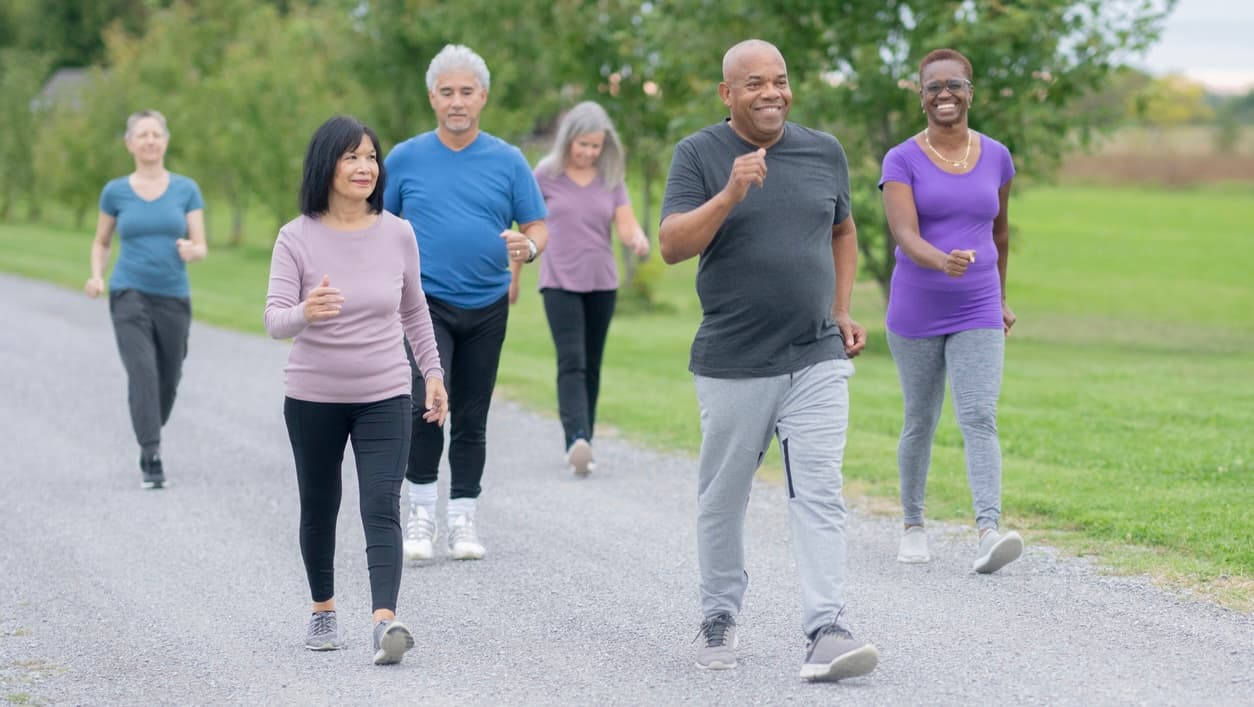Walking slightly faster could help older adults stay fit

Frailty is a medically defined condition in older adults that increases vulnerability to everyday stresses, leading to a higher risk of falls, hospitalization and loss of independence. Warning signs of frailty include:
- Unintentional weight loss
- Moving slowly
- Feeling weak
- Persistent tiredness
- Low levels of physical activity
Because most of these signs have a direct link to how active someone is, walking is a particularly effective way to help older adults improve their overall health and quality of life and maintain independence for longer.
But a common question remains: How fast should older adults walk to see real benefits? Traditionally, the “talk test” has been used to guide walking intensity: people are encouraged to walk at a pace that makes it difficult to sing but still allows for comfortable conversation. However, this method is subjective and difficult to apply consistently.
A new study led by researchers at the University of Chicago Medicine found that walking slightly faster — 14 steps per minute more than a person’s usual pace — led to meaningful improvements in physical function among older adults who were frail or at risk of becoming frail. In a second study, the researchers developed and tested a smartphone app designed to accurately measure walking pace, making it easier to integrate this beneficial practice into daily life.
Why study walking pace?
Walking cadence — the number of steps taken per minute — is an intuitive and pragmatic way to measure walking intensity. Daniel Rubin, MD, an anesthesiologist at UChicago Medicine, became interested in cadence because of his clinical experience evaluating older patients preparing for surgery.
“Older adults have a high risk of complications associated with surgery,” he said. “Traditionally, surgical teams have relied on physical function questionnaires to risk stratify patients, but I thought there must be a way to develop more objective metrics.”
Walking faster is healthier
In a secondary analysis of a randomized controlled trial, Rubin and his colleagues studied older adults classified as frail or prefrail. Participants were enrolled in structured walking programs within their retirement communities, guided and assessed by clinical research staff, and cadence was measured by a device fitted to their thigh. One group was encouraged to walk “as fast as safely possible,” while another group walked at their usual comfortable pace.
The study’s results showed clear benefits: those who increased their cadence by at least 14 steps per minute above their usual pace (to roughly 100 steps per minute) experienced substantial improvements in their functional capacity, demonstrated by their ability to walk longer distances in a standardized test.
“People who haven’t experienced frailty can't imagine how big a difference it makes to be able to not get tired going to the grocery store or not need to sit down while they're out,” Rubin said.
An intuitive walking app
Building on these findings, Rubin's team created a smartphone app called “Walk Test,” which they designed specifically for measuring walking cadence accurately.
"We didn't necessarily trust smartphones’ built-in analytics,” Rubin said. “Instead, we built an app that uses a novel open-source method to analyze the data measured by the phone and lets us actively engage users in brief, deliberate walking tests, ensuring accurate measurement.”
Validation testing showed that the app counts steps per minute with exceptional accuracy, closely matching specialized, research-grade accelerometers. Rubin noted that Walk Test was designed for accessibility and user-friendliness in addition to accuracy.
“We wanted to make it as low-barrier as possible so it’s easy for older adults to use without additional equipment,” he said. “The people who need the most help are usually the least well-equipped to get started.”
Practical advice for daily life
The research highlights walking as a widely accessible exercise with substantial health benefits.
"Even casual walking had positive effects on our study participants," Rubin said. But for those who are able, increasing their walking pace judiciously can yield even greater results.
To use cadence to guide your walking intensity, start by measuring your usual walking pace in steps per minute to establish a baseline. From there, try increasing your pace slightly to find a level that still feels comfortable but brisker.
To maintain a steady and elevated cadence, Rubin recommends using a metronome app to match your steps to a consistent beat. While the Walk Test app developed by the research team is not yet available to the public, metronome apps are a simple alternative that can help walkers stay on pace and track progress over time.
These methods can help integrate faster-paced walking into daily routines, offering a simple yet effective strategy to people who want to stay healthier and more independent as they age.
“A smartphone application to measure walking cadence before major abdominal surgery in older adults” was published in Digital Biomarkers in June 2025. Authors include Daniel Rubin, Marcin Straczkiewicz, Emi Yamamoto, Maria Lucia L. Madariaga, Mark Ferguson; Jennifer S. Brach, Nancy W. Glynn, Sang Mee Lee, Margaret Danilovich and Megan Huisingh-Scheetz.
“Walking cadence as a measure of activity intensity and impact on functional capacity for prefrail and frail older adults,” was published in PLOS ONE in July 2025. Authors include Daniel Rubin, Anthony Hung, Emi Yamamoto, Donald Hedeker, David Conroy, Megan Huisingh-Scheetz, Jennifer Brach, Nancy Glynn and Margaret Danilovich.

Daniel Rubin, MD
Daniel Rubin, MD, is an Associate Professor of Anesthesia and Critical Care.
Learn more about Dr. Rubin